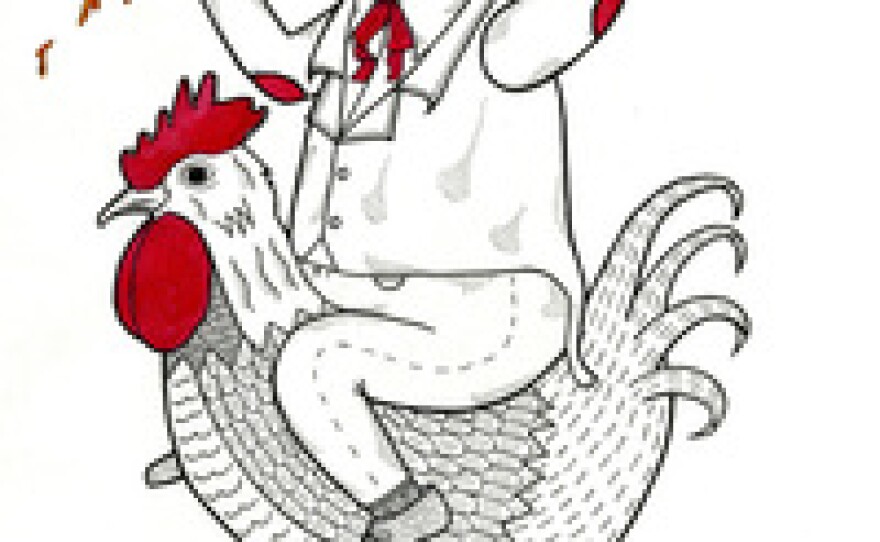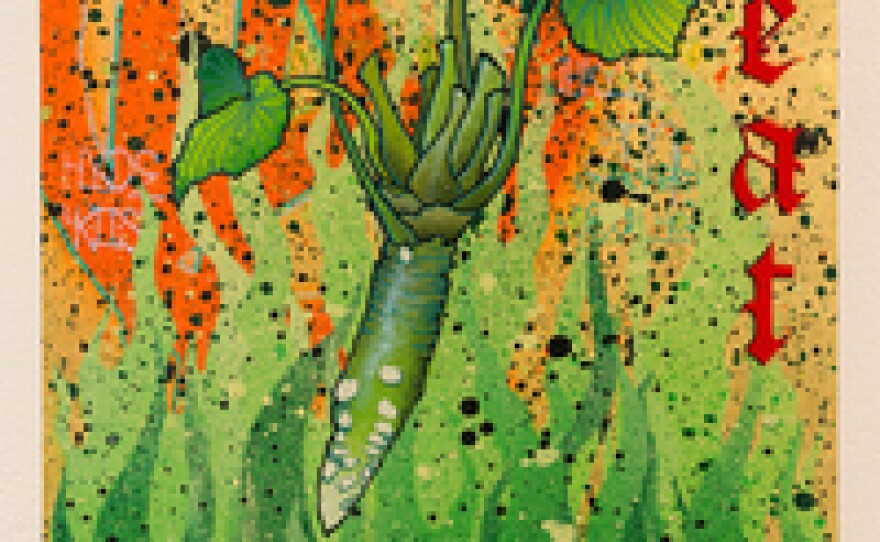


You can find bottles of Sriracha and Tapatio, two of America's most popular hot sauces, sharing space with the ketchup and mayo in millions of American refrigerators, on the shelves of supermarkets and adorning the tables of restaurants across the country.
And until July 12, the fiery condiments are conquering yet another space: the walls of a museum.
For an exhibition called "L.A. Heat: Taste Changing Condiments," the Chinese American Museum in Los Angeles asked 30 artists to come up with new works inspired by Sriracha and Tapatio, two homegrown hot sauce heroes.
"In large American cities everywhere, both Sriracha and Tapatio contend to rival Heinz Ketchup and French's mustard as the all-American condiment for the Y-Generation, for these hot sauces have become interwoven into the American cultural fabric and thus becoming an ubiquitous condiment in American cuisine," the museum says.
Sriracha, in case you've forgotten, is the wildly popular Thai-style, garlicky chile sauce made by Huy Fong Foods, a company that Vietnamese refugee David Tran started in 1980. (It's been in the news lately, as a months-long legal battle between the factory and its neighbors reaches its end.)
Tapatio, meanwhile, is the Mexican-style garlic and chile sauce that's become a West Coast icon. It's still produced by the family of Jose-Luis Saavedra, a Guadalajaran immigrant who founded the company in 1971.
Steven Wong, the museum's interim executive director and curator of the show, says that "LA Heat" isn't only about the city's culinary innovations — it also captures the cultural associations that come with each bottle of hot sauce.
"People think of Sriracha and Tapatio as ethnic sauces," Wong says, "and I wanted to recenter that discussion. A hot sauce show could be superficially kind of pop-y, but I think it's very complex if you peel away the layers."
The show includes some straight-up celebrations of spicy sauce, like Michael C. Hsiung's On The Topic of How Various Sauces Can Make Pizza Better, a drawing of Tapatio's sombrero-wearing mascot riding the Sriracha logo's rooster while gleefully pouring both sauces on a piece of pizza.
But other works take a more conceptual approach.
Like, for instance, Erik Benjamin's Searing Red Dust (The Vanishing Huy Fong Foods Cookbook). Benjamin found recipes from local chefs that call for Sriracha and the other hot sauces made by Huy Fong Foods. He then printed them using an ink that fades when exposed to light and compiled them into a loose-leaf cookbook.
Recently, three of the recipes were also stolen by museum goers, adding an "unexpected conceptual layer" to the work, Wong tells us.
Audrey Chan's painting, Proposal for a Mural Dedicated to David Tran, might at first seem like a simple ode to Sriracha's Vietnamese creator and his success story. But Wong says that, once again, there's more than meets the eye.
The painting isn't just a proposal for a mural, but a commentary on the genre of community murals as a whole. "While it honors the history of David Tran," Wong says, "at the same time it's analyzing and deconstructing that way of communicating history."
And yes, two of the paintings in the show actually used hot sauce as a medium.
Pato Hebert's Pa'que te pica un poco (roughly translated: "so that it stings you a little") consists of the work's title spelled out in wooden letters drenched in Sriracha. Ching Ching Cheng painted each panel of her screen-printed Sriracha Hot Chili Sauces with a layer of the sauce, which changes color over time as it dries and ages.
But the work that most surprised Wong, who didn't see any of the works until they were finished, dismissed Sriracha and Tapatio altogether. Instead, local graffiti legend Gajin Fujita painted the portrait of another kind of LA heat: wasabi.
"I love that he reframed it," Wong says. "It's not just all about Asian and Latino, or a Mexican hot sauce and a Thai hot sauce. It fit perfectly with the exhibition."
Copyright 2014 NPR. To see more, visit http://www.npr.org/






